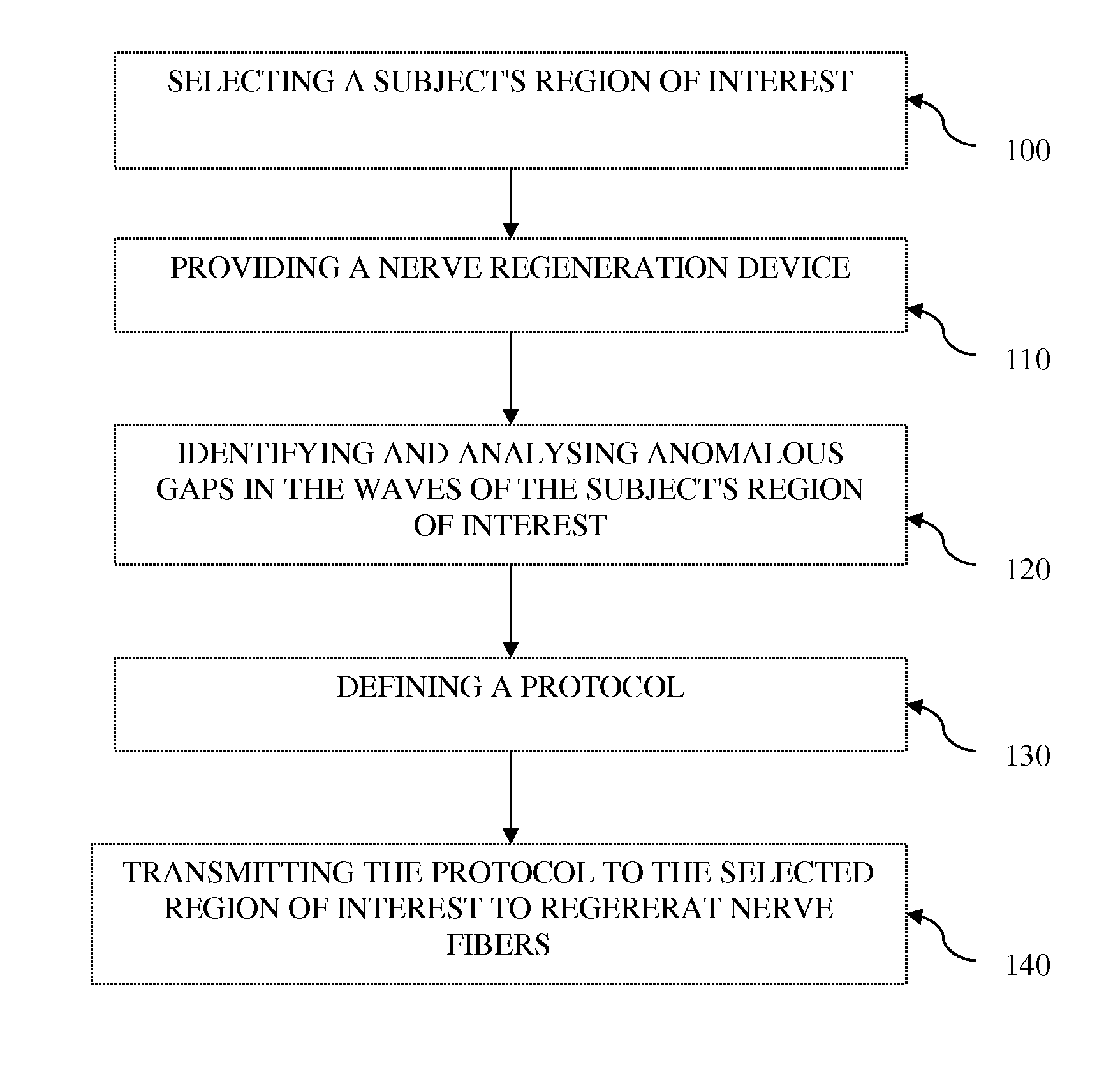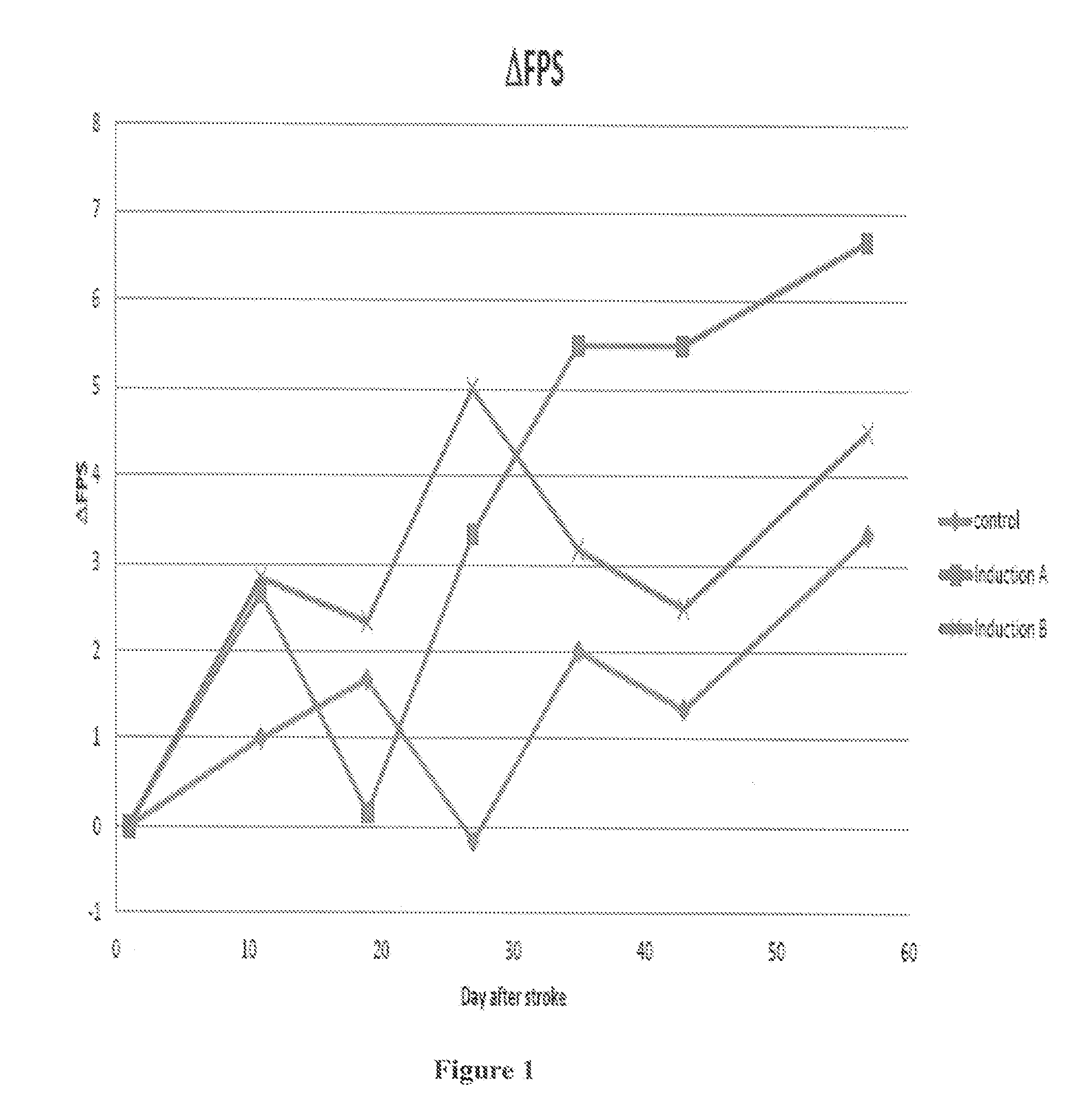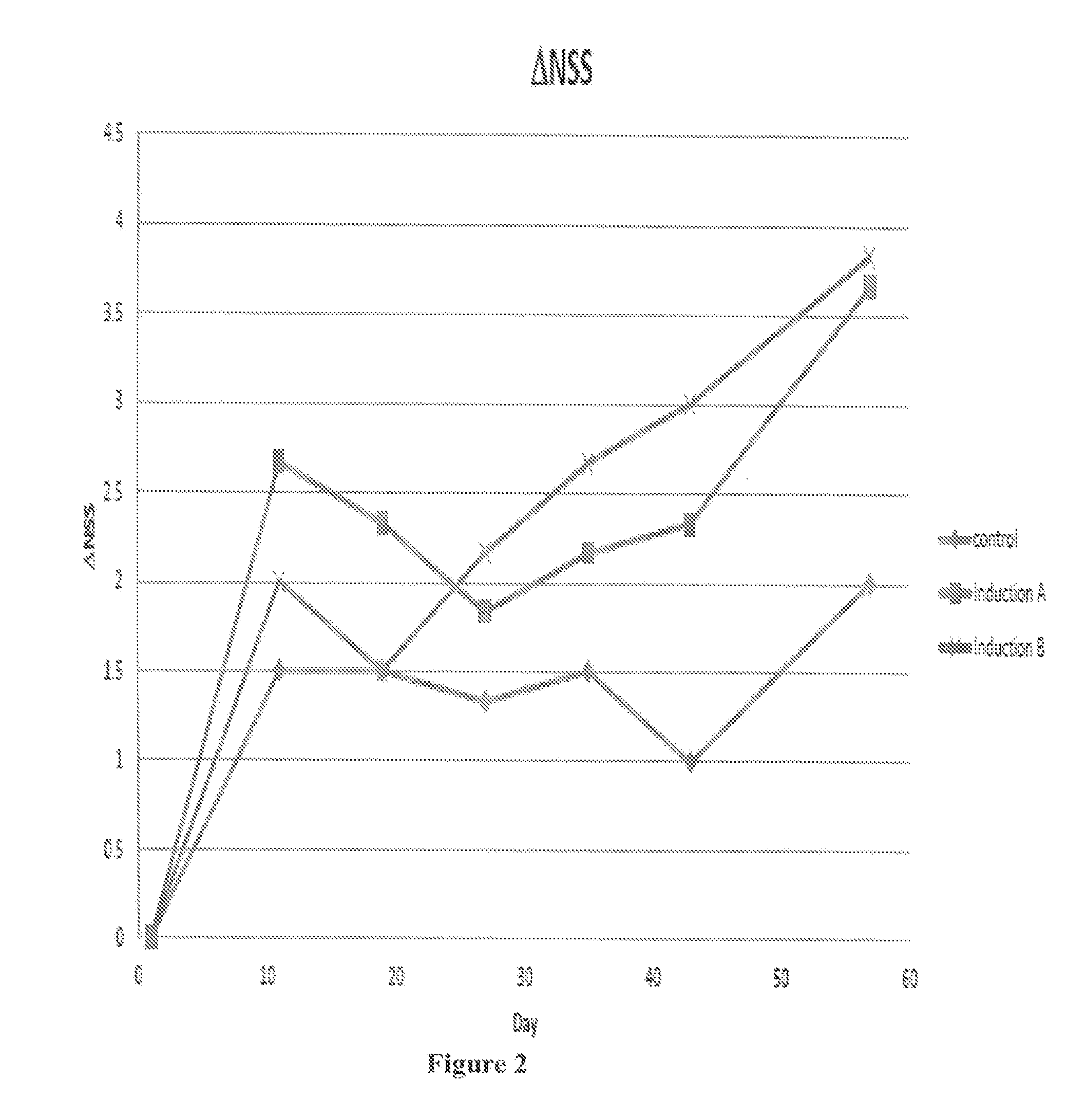Regeneration of nerve fibers
a nerve fiber and nerve technology, applied in magnetotherapy, medical science, sensors, etc., can solve the problems of nerve fiber damage, nerve regeneration is very slow, can take up to several months to complete, and still be some functional deficit, so as to reduce the recovery period and enhance activity
- Summary
- Abstract
- Description
- Claims
- Application Information
AI Technical Summary
Benefits of technology
Problems solved by technology
Method used
Image
Examples
example 1
[0311]The method and apparatus were demonstrated on rats. The rats were subjected to transient (tMCAO) occlusion of the middle cerebral artery (MCAO) stroke procedure, then they were divided to control and treatment groups. The rats were treated by electromagnetic field at different frequencies, denoted as Induction A: about 3.93 Hz, Induction B: about 15.72 Hz, Induction C: about 7.86 Hz and Induction D: about 31.44 Hz. The treatment and control groups were then subjected to various clinical tests and measurements including Leg placement (FLP) and the general assessment (relative neurological severity score, NSS) and / or to scanning and imaging measurements.
[0312]An exemplary experimental protocol would be subjecting the rats to stroke on day 1, then subjecting the treatment groups rats to EMF (electro-magnetic field) for four to eight weeks, once a day for 8 min in various frequencies (i.e. see above frequencies). The treatment protocol was preferably performed using the device of ...
example 2
[0319]Reference is now made to FIGS. 6-9 presenting images of different parts of the brain of rats subjected to stroke procedure as described above. The rats were subjected to stroke procedure on the right side of the brain (R), while the left side (L) is unaffected. During stroke recovery period, the rats were exposed to treatment protocols as defined above.
[0320]Reference is now made to FIG. 6 presenting images of the Corpus callosum after stroke procedure in accordance with an embodiment of the present invention. As shown in this figure, nerve fiber degradation is exhibited in the affected side (R) of the Corpus callosum (see TP1). After two weeks (TP2), thickness of the fiber increases and after 8 weeks (TP4) fibers of both sides of the Corpus callosum, namely, the affected (R) non affected (L) are nearly symmetrical. It is further demonstrated in this figure that by using the method and apparatus of the present invention, regeneration of nerve fibers of the healthy part of the ...
PUM
 Login to View More
Login to View More Abstract
Description
Claims
Application Information
 Login to View More
Login to View More - R&D
- Intellectual Property
- Life Sciences
- Materials
- Tech Scout
- Unparalleled Data Quality
- Higher Quality Content
- 60% Fewer Hallucinations
Browse by: Latest US Patents, China's latest patents, Technical Efficacy Thesaurus, Application Domain, Technology Topic, Popular Technical Reports.
© 2025 PatSnap. All rights reserved.Legal|Privacy policy|Modern Slavery Act Transparency Statement|Sitemap|About US| Contact US: help@patsnap.com



